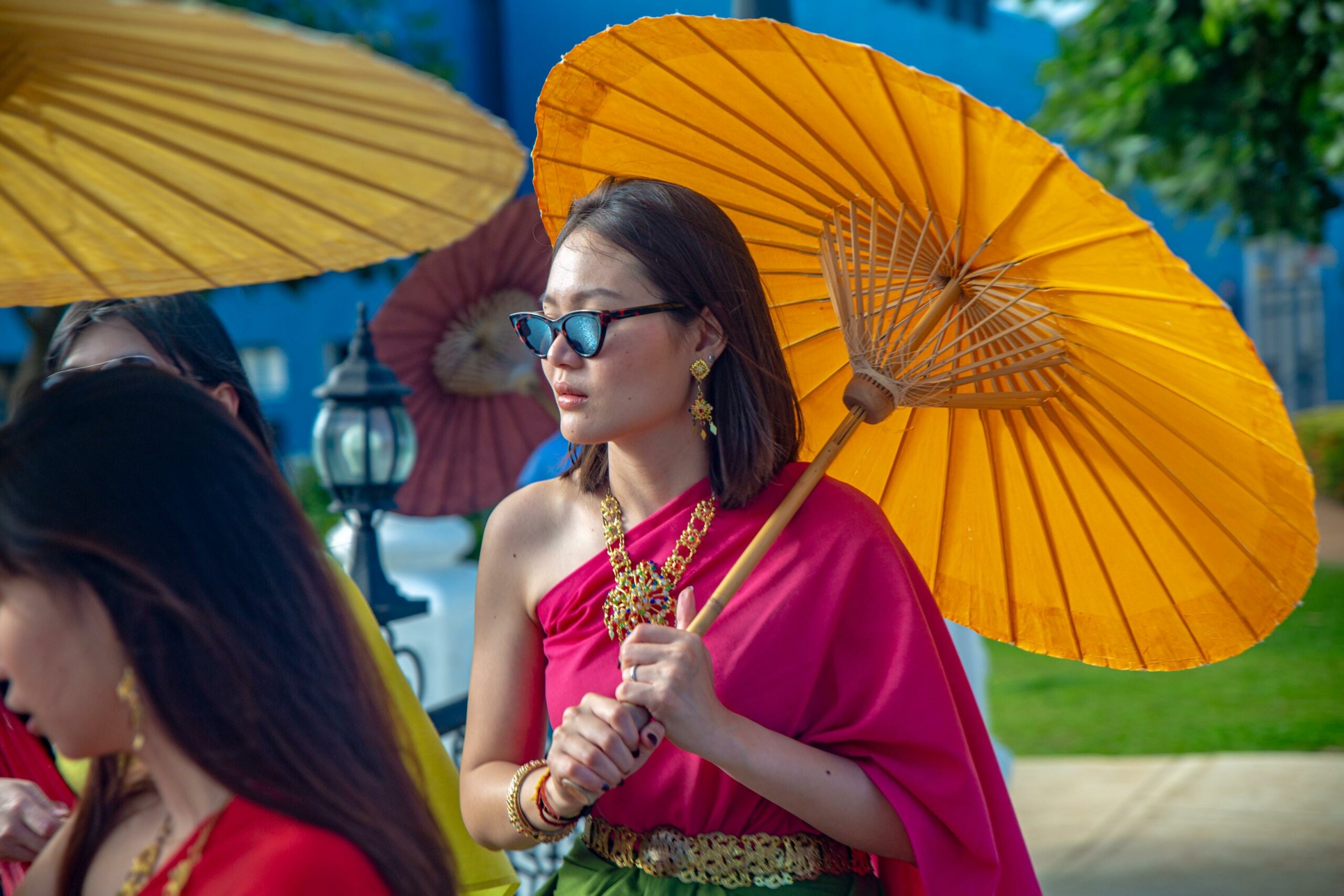Welcome to the enchanting realm of Hungary, where vibrant traditions and captivating customs await exploration. In this article, we will journey together through the lesser-known and unconventional practices that shape the cultural tapestry of this rich and diverse country. Prepare to be enthralled as we unravel Hungary’s unusual traditions, delving deep into its history, folklore, and local customs. With my expertise as a seasoned travel writer and passion for celebrating the vibrancy of local cultures, I invite you to join me on this cultural exploration of Hungary’s fascinating heritage.

Unusual Traditions in Hungary
Hungary is a treasure trove of unique and fascinating traditions. From quirky customs to age-old rituals, the country’s cultural tapestry is woven with enchanting practices that make Hungary truly one-of-a-kind. Let’s delve into the captivating world of unusual traditions that Hungary has to offer.
Lőrinc Day: The End of Watermelon Season
Imagine colorful watermelon slices on a hot summer day, glistening under the sun. In Hungary, the arrival of Lőrinc Day marks the end of the watermelon season. This is the day when locals bid farewell to this delicious summer fruit. As the season comes to a close, people gather together to enjoy one last taste of watermelon before they have to wait until the next year. It’s a bittersweet moment, celebrating the sweetness of summer while looking forward to the changing seasons ahead.
“Lőrinc Day in Hungary is the perfect occasion to savor the final moments of summer and appreciate the passing of time through the cycle of seasons.”
Lentil Stew: A New Year’s Tradition
What better way to start the New Year than with a bowl of lentil stew? In Hungary, it is believed that eating lentils on New Year’s Day brings good luck and prosperity. The lentils symbolize coins and the act of consuming them is thought to attract wealth and abundance in the coming year. So, as the clock strikes midnight on December 31st, Hungarians gather around the table to enjoy a hearty bowl of lentil stew, hoping to set the stage for a prosperous year ahead.
“Hungary’s tradition of eating lentil stew on New Year’s Day reflects the collective desire for a prosperous and abundant new year.”
Orsolya Day: Predicting Winter Weather
If you ever find yourself in Hungary on January 21st, keep an eye out for Orsolya Day. According to folklore, this day’s weather is believed to predict the remaining winter season. If the weather is mild and sunny, it indicates that winter will soon come to an end. On the other hand, if the day is cold and snowy, Hungarians prepare themselves for a longer winter. As the days unfold, locals eagerly observe the weather on Orsolya Day, hoping for a glimpse into the future of the season.
“On Orsolya Day, Hungarians turn to nature, seeking clues to the upcoming winter weather. It’s a charming and whimsical way to anticipate the changing seasons.”
Easter Monday: A Splash of Fun
While Easter is a religious celebration worldwide, Hungary adds a playful twist to the occasion. On Easter Monday, boys and men roam the streets armed with water containers or buckets, ready to sprinkle or even pour water on girls and women. This unique tradition, known as “Watering Monday,” is a cheeky way of bringing laughter and joy to everyone involved. This amusing custom signifies the arrival of spring, with the water symbolizing renewal and fertility.
“Hungary’s Easter Monday tradition of sprinkling or throwing water on girls is a lighthearted way of celebrating spring and embracing the joy of the season.”
February 2nd: The Weather Predicting Day
In Hungary, checking the weather on February 2nd is not just a routine activity; it’s believed to hold special significance. On this day, known as “Piroska Day,” or “Little Red Riding Hood Day,” locals observe the behavior of various animals and plants to predict the upcoming weather. If a bear comes out of hibernation, spring is said to be near. If a hedgehog sees its shadow, it signifies six more weeks of winter. This age-old practice captures the imagination and fosters a deeper connection with nature and its rhythms.
“February 2nd in Hungary is a day of nature’s whispers, where the behavior of animals and plants becomes a captivating way to forecast the changing seasons.”
Pros and Cons of Unusual Traditions in Hungary
Pros:
- Engaging and immersive cultural experiences
- Preservation of unique heritage and customs
- Promoting community spirit through shared celebrations
- A chance to connect with the historical roots of Hungary
Cons:
- Some traditions may seem strange or unfamiliar to outsiders
- Adherence to tradition can sometimes limit innovation
- Misinterpretation or misunderstanding of traditions by tourists can lead to cultural insensitivity or appropriation
As we unravel Hungary’s unusual traditions, we gain a deeper understanding of the country’s rich cultural heritage. These enchanting customs not only showcase the diversity of Hungary but also provide a window into the extraordinary tapestry of the human experience. So, grab your sense of adventure and immerse yourself in the vibrant world of Hungarian traditions. It’s time to embark on a cultural exploration like no other.
Note: The purpose of this article is to shed light on the unique and sometimes peculiar customs found in Hungary. While these traditions may seem unusual to some, it is important to approach them with respect and an open mind, embracing the cultural diversity that makes our world so fascinating.
Hungary is known for its rich history, stunning architecture, and vibrant culture. However, there’s a side to this country that many might find peculiar and downright weird. From bizarre traditions to unusual attractions, Hungary has it all. If you’re looking for a unique and offbeat experience, look no further than our article on Hungary’s weirdest sights and activities. Prepare to be fascinated and maybe even a little disturbed as you uncover the strange wonders of this captivating country. Curious? Click here to explore Hungary’s weird side Hungary Weird. Get ready for a journey like no other!
FAQ
Question 1
What are some of the distinctive folk traditions in Hungary?
Answer 1
Hungary is known for its rich folk traditions, which include decorated pottery, embroidery, carvings, folk music, and dance. These artistic expressions play a significant role in preserving and celebrating Hungarian culture.
Question 2
What are some amusing customs in Hungary?
Answer 2
Hungary has a variety of amusing customs that are unique to the country. Some examples include eating lentil stew on New Year’s Day for good luck, checking the weather on February 2 to predict the arrival of spring, and sprinkling or throwing water on girls at Easter for fertility and beauty. Hungary also celebrates its version of April Fool’s Day, marking Lőrinc Day as the end of watermelon season, and predicts winter weather on Orsolya Day.
Question 3
How does Hungarian culture influence its cuisine?
Answer 3
Hungarian cuisine is greatly influenced by the country’s rich cultural heritage. The flavors, ingredients, and cooking methods reflect the traditions and customs of the Hungarian people. Dishes such as goulash, chimney cake, and lángos have become iconic symbols of Hungarian cuisine, showcasing the unique blend of flavors and spices that define the country’s culinary traditions.
Question 4
What role does folklore play in Hungarian culture?
Answer 4
Folklore holds a special place in Hungarian culture, serving as a means of preserving the nation’s history, beliefs, and traditions. Hungarian folklore encompasses legends, myths, and folk tales that have been passed down through generations, offering insights into the values, customs, and spiritual beliefs of the Hungarian people. Folklore also influences various art forms, including music, dance, and visual arts.
Question 5
How does the traditional Hungarian attire reflect the country’s culture?
Answer 5
Traditional Hungarian attire, with its intricate embroidery and vibrant colors, is a visual representation of the country’s culture. The garments, such as the embroidered peasant blouses and vests, showcase the craftsmanship and artistic skills of Hungarian artisans. These embroidered garments are not only symbols of national identity but also serve as a connection to the rich folk traditions and customs of Hungary.
- SYBAU See You Baby Meaning: Gen Z Slang Evolves - July 1, 2025
- Unlock Your Inner Youth: Lifestyle Secrets for a Vibrant Life - July 1, 2025
- Decode SYBAU Meaning: Gen Z Slang Explained - July 1, 2025






